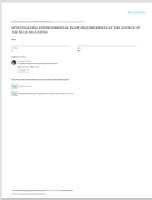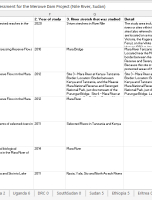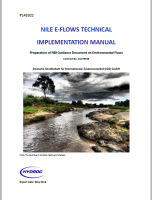Abstract
Environmental flow assessment and maintenance are relatively new practices for the water sector,
especially in developing countries. The concept of environmental flow assessment is new to
Ethiopia, despite the fact that the country is endowed with many natural lakes and rivers. In the
last decade flow in the Abay River (i.e., the Blue Nile) has been modified by operation of the
Chara Chara weir and diversions to the Tis Abay hydropower stations, located downstream of the
rivers source, Lake Tana. The most conspicuous impact of these human interventions has been
significantly reduced flows over the Tis Issat Falls. This paper presents the findings of a
hydrological study conducted to estimate environmental flow requirements downstream of the weir.
The South African desktop reserve model was used to determine both high and low flow requirements
in the reach containing the Falls. The results indicate that to maintain the
basic ecological functioning in this reach requires an average annual allocation of 862 Mm3 (i.e.
equivalent to 22% of the mean annual flow). Under natural conditions there was considerable
seasonal variation, but the absolute minimum mean monthly allocation, even in dry years, should not
be less than approximately 10 Mm3 (i.e. 3.7 m3s-1). This study provides sound options that could be
used to improve the current situation and to alleviate the environmental problems in the downstream
of Laka Tana; especially in the vicinity of the Tis Issat Falls, in order to maintain the aquatic
biodiversity and to keep the
visual amenity of the Falls.



